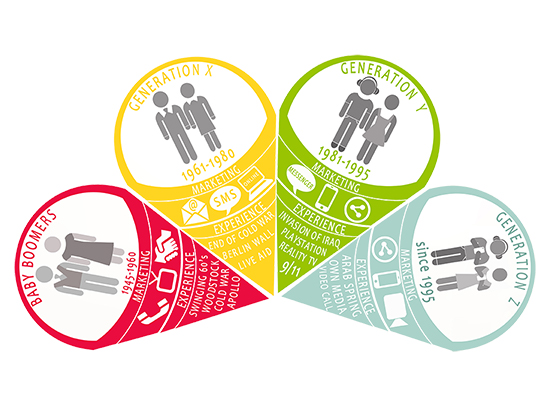Database Marketing Helps Drive Homebuilder Customer Acquisition
Personalized engagement strategies are becoming more necessary than ever for businesses, especially homebuilders, to grow and thrive. Consumers want their experiences with a brand to feel tailored directly to them. And this is no exception for homebuyers.
The best way, and truly the only way, to build effective personalized experiences for homebuyers is through the use of database marketing.
What is database marketing?
Database or “data-driven” marketing, is a form of marketing where a variety of customer data is collected, organized, and analyzed to draw deeper insights about customer behaviors. These insights help marketers predict wants, needs, and future behaviors of customers to develop tailored marketing strategies, which help retain current customers and attract new ones more effectively. Database marketing rejects the traditional notion that a single standard marketing plan is efficient for every customer, instead advocating for the necessity of personalized approaches.

Why is database marketing important for homebuilders?
Database marketing is important for homebuilders because it enables them to understand their customer segments on a more personal level, developing effective customer journey maps that create enhanced customer experiences. It’s no longer about segmenting customers just by who they are but creating tailored campaigns that also recognize what they want, what they need, and how they think.
Check out a few eye-opening statistics about consumer needs for personalization:
- 72% of consumers only engage with marketing messages tailored specifically to their own interests.
- 70% of millennials have frustrations with receiving irrelevant marketing emails over personalized offers.
- 90% of U.S consumers find personalized marketing very appealing or somewhat appealing.
- 70% of consumers say their loyalty is influenced by a company’s understanding of their personal needs.
- 80% of companies saw an increase in their bottom line after implementing more personalization.
Buying a house is an emotional and personal investment, so it only makes sense that like all other consumers, the homebuyer demand for personalized homebuying experiences is increasing too.
Related: Engaging the Modern Day Buyer
Benefits of database marketing
Here are a few ways database marketing can benefit homebuilders:
- Allows for testing of new marketing ideas to select customer segments
- Saves resources by campaigning to individuals more likely to respond
- Delivers highly-effective personalized messaging to current and potential customers
- Identifies more loyal “promoter” customers, who can be leveraged to drive referrals
- Builds stronger relationships, helping increase customer retention
- Identifies the best marketing channels to use for customer engagement
Database marketing makes it easier to get a detailed picture of each customer’s journey and finds purposeful ways to engage on an individual level – bringing greater returns on investment.
Types of customer data
To deliver the personalized experience homebuyers expect, homebuilders need to start with a bird’s-eye view of each customer’s individual journey at every touchpoint. Database marketing draws from four main types of customer data to do this: identity, descriptive, interactive, and qualitative.

Identity data
This type of customer data is the demographic and firmographic information a customer would provide to a business when they first make contact. This data, unique to the individual, generally includes:
- Name
- Age
- Gender
- Phone Number
- Address
- Email Address
This basic snapshot provides a baseline for marketers to begin segmenting leads and current customers into different buyer personas. In the homebuilding industry, there are a number of personas that builders market to: singles, married couples, families with children, empty nesters, first-time homebuyers, luxury home seekers, and a myriad of personas in between. Initial segmentation of buyers into categories by age group and gender helps make personalization easier when it comes time to market personas individually.
Descriptive data
Descriptive data, or quantifiable data, dives deeper into who an individual is beyond age and gender. It includes more detailed information such as:
- Family: marital status, number, age of children
- Lifestyle: cars, property, pets
- Career: industry, education level, income level
This data helps homebuilders predict homebuying behavior, as well as what features a buyer will want and need in their home, based on patterns that emerge over time. Those predicted behaviors can then be used to target specific buyer personas at the right time in their life cycle.
Interactive data
Also known as behavioral data, interactive data refers to the engagement customers have with a brand. This information is helpful to marketers because it allows them to analyze the effectiveness of each marketing channel, marketing messaging, and the overall customer experience. For homebuilders, this data could include:
- Inbound and outbound communication: dates, channels, opened emails, click-through rates, etc.
- Website activity: number of visits, contact forms filled out, inquiries, complaints
- Social media: interactions on social media channels including comments, likes, shares, link clicks
This information enables marketers to learn how people prefer to communicate with a business, how often they are doing it, and where they are doing it.
Qualitative data
The last piece of the customer data puzzle is learning about the attitudes, opinions, and motivations of buyers – aka how they feel about a brand and the products or services that brand provides, and why.
For homebuilders, this information usually comes in the form of online reviews and customer satisfaction surveys. With these details, homebuilders can further understand potential buyer behaviors. This data also reveals who your most loyal customers are, which you can leverage to drive revenue, as well as areas your customer experience and marketing needs work.
Related: How to Leverage Your Promoters and Get More Referrals

Using data to drive customer acquisition
As customer data is collected, sorted, and examined, patterns will begin to emerge that will define specific types of buyers. By using these insights, homebuilders can improve their customer acquisition efforts. Here are a few ways:
Refined and personalized customer messaging
The modern homebuyer journey is complex, involving a number of touchpoints, channels, and timespans. Each person has their own values, needs, and motivations when it comes to purchasing a home. Presenting customers with offers, like free upgraded appliances, and messaging aligned to their most important purchase drivers can significantly improve conversion rates throughout the customer journey. With personalization not only will customer acquisition increase, so will visitor engagement, customer experience, brand perception, and lead generation.
More ideal buyers targeted
With all the data used to segment a customer base, it’s much easier to identify who your most profitable customers are, then use that information to target market potential buyers with similar characteristics. For example, data reveals that the majority of revenue for a specific homebuilder comes from single women in their 30s with no kids and an average income of $75,000 per year.
With this information, the marketing department can dive further into the data, looking at behaviors, purchase driving factors, wants, and needs of those buyers to build a personalized campaign directly targeting women in this segmentation.
Investments in the right places
Using customer data to determine how buyers are finding you and which ones are following through the path to purchase, helps reduce acquisition costs and improve ROI.
For example, a builder’s advertising budget allocates the most resources to traditional print and tv messaging, but after analyzing customer data it’s clear that most of their potential buyers are coming from online channels. Additionally, the ones most likely to convert are finding the website from Google. This would indicate the company needs to turn efforts to its online presence and allocate more resources specifically to Google ads. They can then go a step further and determine which type of ads convert most effectively.
Once considered innovative, database marketing has now become a crucial part of any strategic campaign approach and can help homebuilders target the right buyers with messaging that resonates – improving customer acquisition rates and reducing marketing costs.
Are you using your customer data right?
AvidCX can help.
Avid Insights Team
